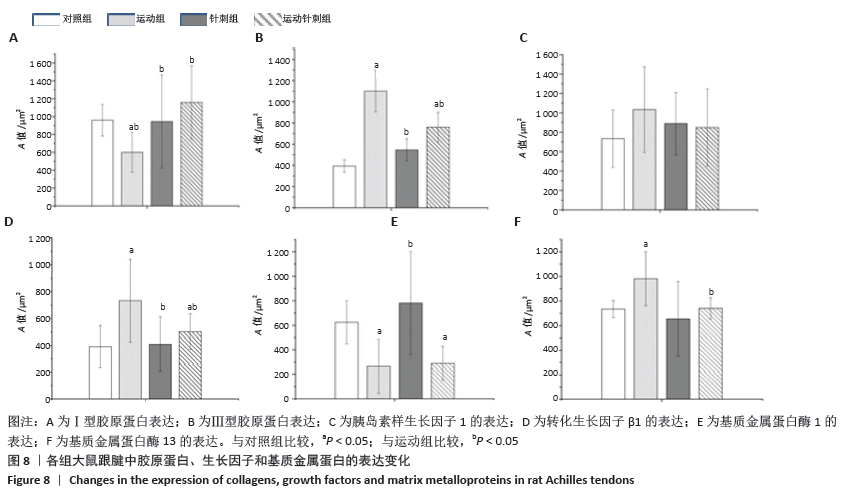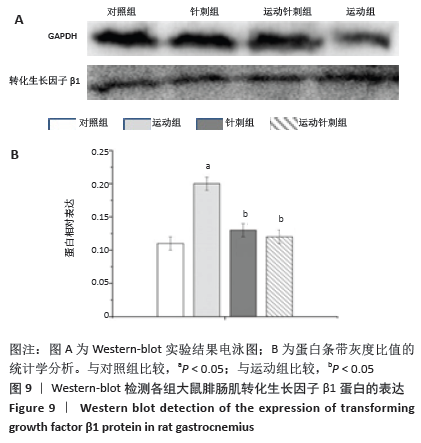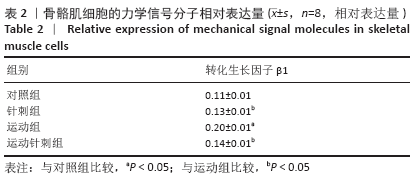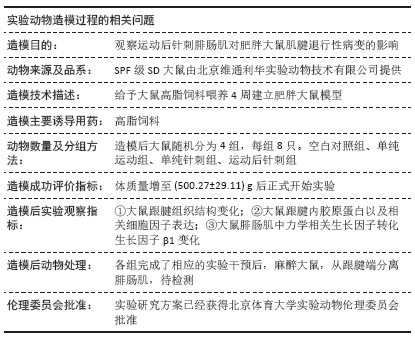[1] CHANDRAN A, BARRON MJ, WESTERMAN BJ, et al. Time Trends in Incidence and Severity of Injury Among Collegiate Soccer Players in the United States: NCAA Injury Surveillance System,1990-1996 and 2004-2009l. Am J Sports Med. 2016;44(12):3237-3242.
[2] MEHDIZADEH A, GARDINER BS, LAVAGNINO M, et al. Effect of collagen length distribution and timing for repair on the active TGF-β concentration in tendon.Connect Tissue Res. 2018;59(5):396-409.
[3] ZHANG ZJ, NG GYF, LEE WC, et al.Increase in passive muscle tension of the quadriceps muscle heads in jumping athletes with patellar tendinopathy. Scand J Med Sci Sports. 2017;27(10):1099-1104.
[4] SPRAGUE AL, SMITH AH, KNOX P, et al.Modifiable risk factors for patellar tendinopathy in athletes: a systematic review and meta-analysis. Br J Sports Med. 2018;52(24):1575-1585.
[5] STAUBER T, BLACHE U, SNEDEKER JG.Tendon tissue microdamage and the limits of intrinsic repair. Matrix Biol. 2020;85-86:68-79.
[6] ZHANG J, YUAN T, WANG JH.Moderate treadmill running exercise prior to tendon injury enhances wound healing in aging rats. Oncotarget. 2016;7(8):8498-8512.
[7] SINGH A, CALAFI A,DIEFENBACH C,et al.Noninsertional Tendinopathy of the Achilles. Foot Ankle Clin. 2017;22(4):745-760.
[8] DEDERER KM, TENNANT JN. Anatomical and Functional Considerations in Achilles Tendon Lesions. Foot Ankle Clin. 2019;24(3):371-385.
[9] THORPE CT, CHAUDHRY S, LEI II, et al.Tendon overload results in alterations in cell shape and increased markers of inflammation and matrix degradation. Scand J Med Sci Sports. 2015;25(4):e381-391.
[10] ZERGOUN AA, ZEBBOUDJ A, SELLAM SL, et al. IL-6/NOS2 inflammatory signals regulate MMP-9 and MMP-2 activity and disease outcome in nasopharyngeal carcinoma patients. Tumour Biol. 2016;37(3): 3505-3514.
[11] POMIANOWSKA E, SANDNES D, GRZYB K, et al. Inhibitory effects of prostaglandin E2 on collagen synthesis and cell proliferation in human stellate cells from pancreatic head adenocarcinoma. BMC Cancer. 2014;14:413.
[12] AKAZAWA N, OKAWA N, KISHI M, et al. Effects of long-term self-massage at the musculotendinous junction on hamstring extensibility, stiffness, stretch tolerance, and structural indices: A randomized controlled trial. Phys Ther Sport. 2016;21: 38-45.
[13] ANDRZEJEWSKI W, KASSOLIK K, DZIEGIEL P, et al. Massage may initiate tendon structural changes--a preliminary study. In Vivo. 2015;29(3):365-369.
[14] ABATE M, SALINI V, ANDIA I. How Obesity Affects Tendons?.Adv Exp Med Biol. 2016;920:167-177.
[15] HSIEH YL, HONG CZ, LIU SY, et al. Acupuncture at distant myofascial trigger spots enhances endogenous opioids in rabbits: a possible mechanism for managing myofascial pain. Acupunct Med. 2016; 34(4):302-309.
[16] LIU L, SKINNER MA, MCDONOUGH SM, et al. Traditional Chinese Medicine acupuncture and myofascial trigger needling: The same stimulation points?. Complement Ther Med. 2016;26:28-32.
[17] HUNT ER, CONFIDES AL, ABSHIRE SM, et al. Massage increases satellite cell number independent of the age-associated alterations in sarcolemma permeability. Physiol Rep. 2019;7(17): e14200.
[18] 杨宁,周越,王瑞元.针刺对骨骼肌拉伤恢复进程中纤维化因子的影响[J].北京体育大学学报,2018, 41(9): 70-74.
[19] No authors listed. Eccentric training and an Achilles wrap reduce Achilles tendon capillary blood flow and capillary venous filling pressures and increase tendon oxygen saturation in insertional and midportion tendinopathy. Am J Sports Med. 2007;35(4):673.
[20] 白胜超. 一次大负荷离心运动后骨骼肌线粒体分裂的机制及针刺干预研究[D].北京:北京体育大学,2018.
[21] D’ADDONA A, MAFFULLI N, FORMISANO S, et al. Inflammation in tendinopathy. Surgeon. 2017;15(5): 297-302.
[22] HE R, ZHANG J, LUO D, et al. Upregulation of Transient Receptor Potential Canonical Type 3 Channel via AT1R/TGF- β 1/Smad2/3 Induces Atrial Fibrosis in Aging and Spontaneously Hypertensive Rats.Oxid Med Cell Longev. 2019;2019:4025496.
[23] ZHANG J, WANG JH. The Effects of Mechanical Loading on Tendons - An In Vivo and In Vitro Model Study. PLoS One. 2013;8(8):e71740.
[24] THAMPATTY BP, WANG JH.Mechanobiology of young and aging tendons: In vivo studies with treadmill running. J Orthop Res. 2018; 36(2):557-565.
[25] GUMUCIO JP, SUGG KB, MENDIAS CL. TGF-β superfamily signaling in muscle and tendon adaptation to resistance exercise.Exerc Sport Sci Rev. 2015;43(2):93-99.
[26] COCKERILL M, RIGOZZI MK, TERENTJEV EM. Mechanosensitivity of the 2nd Kind: TGF-β Mechanism of Cell Sensing the Substrate Stiffness.PLoS One. 2015;10(10): e0139959.
[27] 王雅榕.针刺对急性离心运动骨骼肌胞浆和线粒体中H_2O_2浓度变化的影响[D].济宁:曲阜师范大学,2015.
[28] VASSILAKOS G, BARTON ER. Insulin-Like Growth Factor I Regulation and Its Actions in Skeletal Musclel. Compr Physio. 2018;9(1): 413-438.
[29] 郭振海,黄昌林,巨文军.运动所致肌腱中内源性IGF-1的表达[J].中国临床康复,2002,6(2):199-200.
[30] ONAL ED, IPEK A, EVRANOS B, et al. Structural tendon changes in patients with acromegaly: assessment of Achilles tendon with sonoelastographyl. Med Ultrason. 2016;18(1):30-35.
[31] WANG X, LI F, XIE L, et al. Inhibition of overactive TGF-β attenuates progression of heterotopic ossification in mice.Nat Commun. 2018;9(1): 551.
[32] WANG X, XIE L, CRANE J, et al. Aberrant TGF-β activation in bone tendon insertion induces enthesopathy-like disease.J Clin Invest. 2018;128(2):846-860.
[33] MILLAR NL, MURRELL GA, MCINNES IB. Inflammatory mechanisms in tendinopathy-towards translationl.Nat Rev Rheumatol. 2017;13(2): 110-122.
|
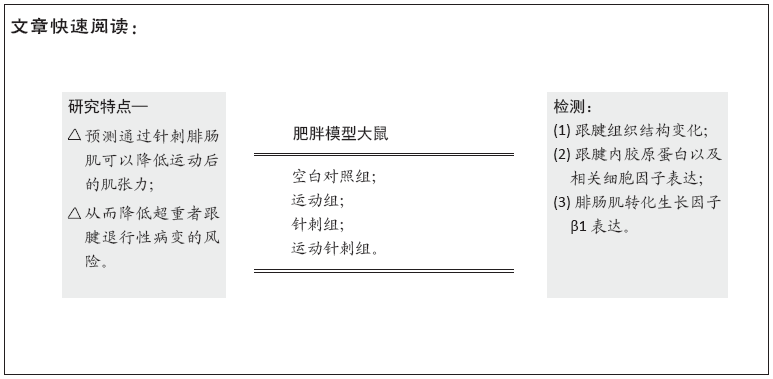 文题释义:
文题释义:






